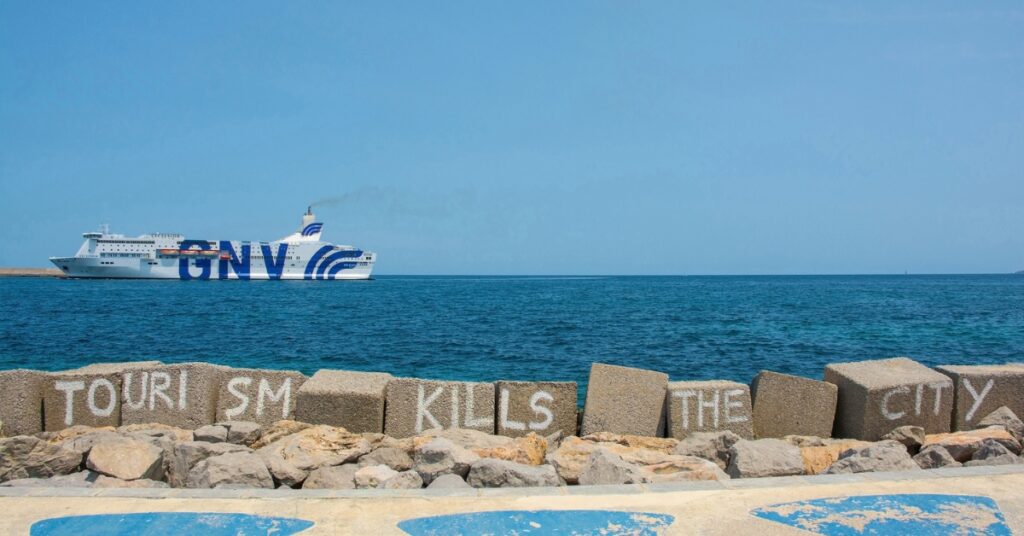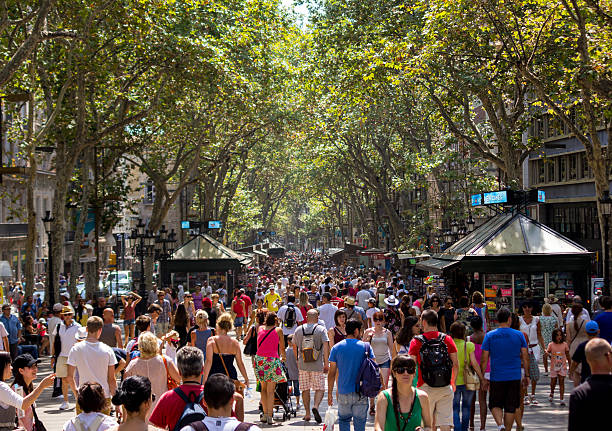
European cities are pushing for “balanced tourism” after welcoming nearly 340 million visitors in early 2025, as local leaders warn that overcrowding, rising rents, and pollution are hurting residents more than helping economies.
Cities call for balance between profit, sustainability
Local governments across Europe say that mass tourism is putting cities under pressure, as visitor numbers return to record highs.
Officials at the Global Tourism Forum in Brussels said that they want growth that “works for citizens” rather than just visitors.
By 2050, European cities hope to create tourism models that balance economic gain with social and environmental needs.
“In some cities like Venice and Barcelona, we see a sort of monoculturalisation of economic activities in the city centre,” said Eleonora Orso, policy officer at Eurocities, which represents more than 200 urban areas.
She said this shift means local shops and housing now cater mainly to tourists, not residents.
Visitor surge sparks new warnings
According to UN Tourism, nearly 340 million international tourists visited Europe in the first half of 2025 — up 4% from last year and 7% above pre-pandemic levels.
The region remains the world’s most popular destination, led by France and Spain, which both recorded 5% growth in arrivals.
But cities such as Lisbon, Athens, and Amsterdam say that infrastructure is struggling to keep pace. Housing costs are soaring, waste has increased, and public transport systems are overcrowded.
In several cities, residents have staged protests demanding limits on short-term rentals and cruise ships.

‘Choose who you want to attract’
Tourism chiefs at the Brussels meeting said that cities should shift from chasing numbers to managing quality.
Patrick Bontinck, CEO of visit.brussels, told delegates that each city must choose which visitors they want to attract and design their infrastructure for those people.
Sabine Wendt, head of visitBerlin, warned that short-term profit could destroy the very appeal that draws travelers.
“The product in tourism is the destination itself,” she said. “If we destroy the city socially or environmentally, no one will come anymore.”
Both Wendt and Orso called for joint action between governments, businesses, and travellers to protect cities. They said that tourism strategies should link directly to housing, transport, and environmental planning, not exist as separate policies.
Economic pressures remain high
While tourism continues to recover, the sector faces growing economic uncertainty. The UN Tourism Confidence Index, published in September 2025, reported that high transport and accommodation costs remain the biggest challenges for travelers this year.
“Tourism inflation” — a measure of rising travel prices — is expected to fall from 8% in 2024 to 6.8% in 2025, still well above average inflation rates. Experts say that visitors are now booking shorter trips or staying closer to home to manage costs.
Despite this, UN Tourism Secretary-General Zurab Pololikashvili said that global travel remains resilient.

EU to unveil first tourism strategy
Although the European Union has no formal control over tourism policy, the European Commission is drafting its first common strategy for sustainable tourism, due in early 2026.
The plan aims to make the sector more competitive, resilient, and eco-friendly by tackling overcrowding, improving digital infrastructure, and supporting greener travel options.
José Ramón Bauzá, founder of the Aviation and Tourism Forum, said both public and private sectors must act together:
“Every city has a different way of thinking, so you cannot establish a standard approach, (but) it’s absolutely important that the private and public sector work together… If not, we will lose not only time but money for investors.”
Residents still divided on the future
Reactions among locals are mixed. In Amsterdam, residents have taken the city council to court over “overtourism,” arguing that noise, rent hikes, and pollution are driving people away.
Others, particularly small business owners, fear tighter limits could harm jobs and local incomes.
Tourism experts say that the debate is not about rejecting visitors but about redefining success. Cities want tourists who respect their communities — and policies that make travel fairer for those who live there year-round.

Travel rules tighten as tourist systems go digital
The EU’s plan for “balanced tourism” comes as new border systems prepare to change how people enter and move within Europe.
From 2026, non-EU visitors will need ETIAS authorization before entering the Schengen Area. The system, similar to the US ESTA, screens travelers for security and migration risks before they arrive.
The Entry/Exit System (EES) will also track who enters and leaves the bloc, replacing passport stamps with digital records.
Officials say that these systems will make travel smoother and help identify overstays, but critics warn they could add costs and delays for short-term visitors.
For long-term migrants, the EU’s new tourism and border plans signal a wider move towards data-driven mobility. The information gathered by ETIAS and EES may influence visa policies and labor migration decisions, as governments seek to balance openness with control.
Travel analysts say that both systems will support the EU’s sustainability goals by helping cities manage visitor flows.
Migration policy under quiet reform
The EU’s push for sustainable tourism is reshaping migration discussions behind the scenes. Governments are linking tourism, housing, and migration policies to ease pressure on cities hit by rising rents and shrinking public space.
Countries such as Spain, Portugal, and Greece — which rely heavily on tourism — are tightening residency schemes that allow non-EU citizens to gain visas by buying property.
At the same time, leaders in Germany and France are calling for clearer routes for skilled migrants to fill jobs in tourism and hospitality, sectors struggling with staff shortages since the pandemic.
The EU’s first tourism strategy, due in 2026, is expected to further align with immigration policy. The goal is a Europe that welcomes travelers and workers alike, but without overwhelming its cities or citizens.
The road less traveled
Europe’s cities aren’t turning their backs on tourism; they’re trying to reshape it.
The goal is clear: protect the places people love by making travel work for those who live there too.
As the EU moves towards its first continent-wide tourism strategy, the real journey begins — finding a balance between open doors and breathing space.
